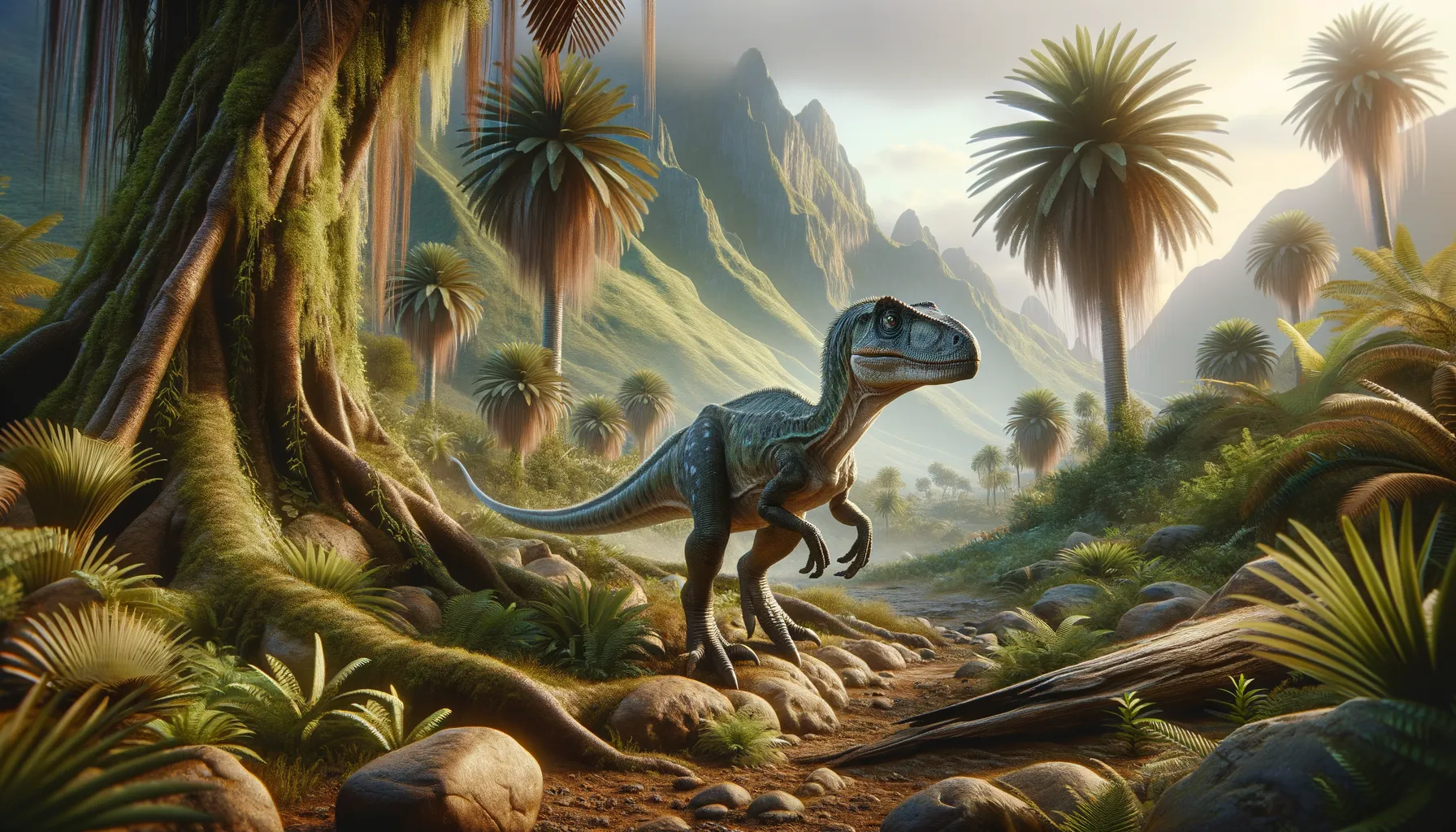
Elachistosuchus
Tiny reptile, vast ancient mysteries.
Period
Triassic
Length
About 20 to 25 centimeters in length.
Height
Approximately 5 to 10 centimeters tall.
Weight
Estimated to weigh around 100 grams.
Elachistosuchus was a small reptilian creature from the Triassic period. Its fossil remains provide valuable insight into early archosaur life, living over 200 million years ago. Despite its small size, its discovery helps paleontologists understand more about the diversity of prehistoric reptiles. Known from limited fossil evidence, it is an intriguing piece in the complex puzzle of dinosaur evolution and their close relatives.
Diet
Elachistosuchus likely fed on insects and other small invertebrates. Its small size would have necessitated a diet of easily catchable prey, possibly including some small plants or fruits.
Hunting
As a small creature, Elachistosuchus would have been a stealthy hunter, relying on its compact size to quietly ambush its prey. It may have used the cover of foliage or rocks to approach its unsuspecting targets.
Environmental challenges
Living during the Triassic period, Elachistosuchus faced challenges such as fluctuating climates and competition for food resources. The period was marked by the aftermath of a major extinction event, resulting in dynamic and changing ecosystems. Adapting to these new environments would have been crucial for its survival.
Speed
Likely slow-moving due to small size.
Lifespan
Possibly short, typical of small reptiles.
First discovery
Discovered in the early 20th century.
Fun Facts
- Elachistosuchus is not actually a dinosaur; it's a small early relative of dinosaurs and crocodiles.
- This creature lived during the Middle Triassic period, around 240 million years ago.
- Elachistosuchus was quite small, about the size of a modern-day lizard.
- Its name means 'tiny crocodile' in Greek, highlighting its petite size and crocodile-like features.
- Fossils of Elachistosuchus have been found primarily in Germany.
- As a small carnivore, it likely fed on insects and other small animals of its time.
- Elachistosuchus helps scientists understand the early evolution of archosaurs, the group that includes dinosaurs and crocodiles.
Growth and Development
Elachistosuchus likely experienced rapid growth to reach maturity quickly, a strategy common among small reptiles. Its developmental stages might have included a period of rapid size increase after hatching from eggs. This quick growth would have been advantageous in escaping predators and competing for food.
Habitat
This small reptile likely lived in a variety of habitats, including forested areas and near water bodies, where prey was abundant and cover was available. Its environment would have consisted of mixed terrestrial landscapes, providing diverse resources and opportunities for survival. The presence of numerous microhabitats could have supported a range of species interactions.
Interaction with other species
Elachistosuchus likely interacted with various small vertebrates and invertebrates in its ecosystem. Its role could have included both predator and prey, depending on the species it encountered. Competition with other small reptiles and amphibians was likely, as they vied for similar food sources.
Natural lifespan
Its lifespan was likely around a few years.
Reproduction
Elachistosuchus probably reproduced through laying eggs, a common trait among reptiles. Its reproductive strategy might have involved producing multiple offspring at once to increase the chances of survival of some to adulthood. Parental care, if any, was likely minimal, with the young being independent early in life.
Social behaviour
Little is known about the social behavior of Elachistosuchus, but it may have been solitary due to its small size and dietary needs. If interactions occurred, they might have been centered around mating or competing for territory and resources. Any grouping behavior would likely have been temporary and dictated by environmental factors.
Fossil locations
Fossils of Elachistosuchus have been found in Germany, which provide critical information about its anatomy and lifestyle. The discovery of such fossils in Europe highlights the diverse range of small reptiles during the Triassic period. These fossils are relatively rare, making each discovery important for piecing together its existence.
